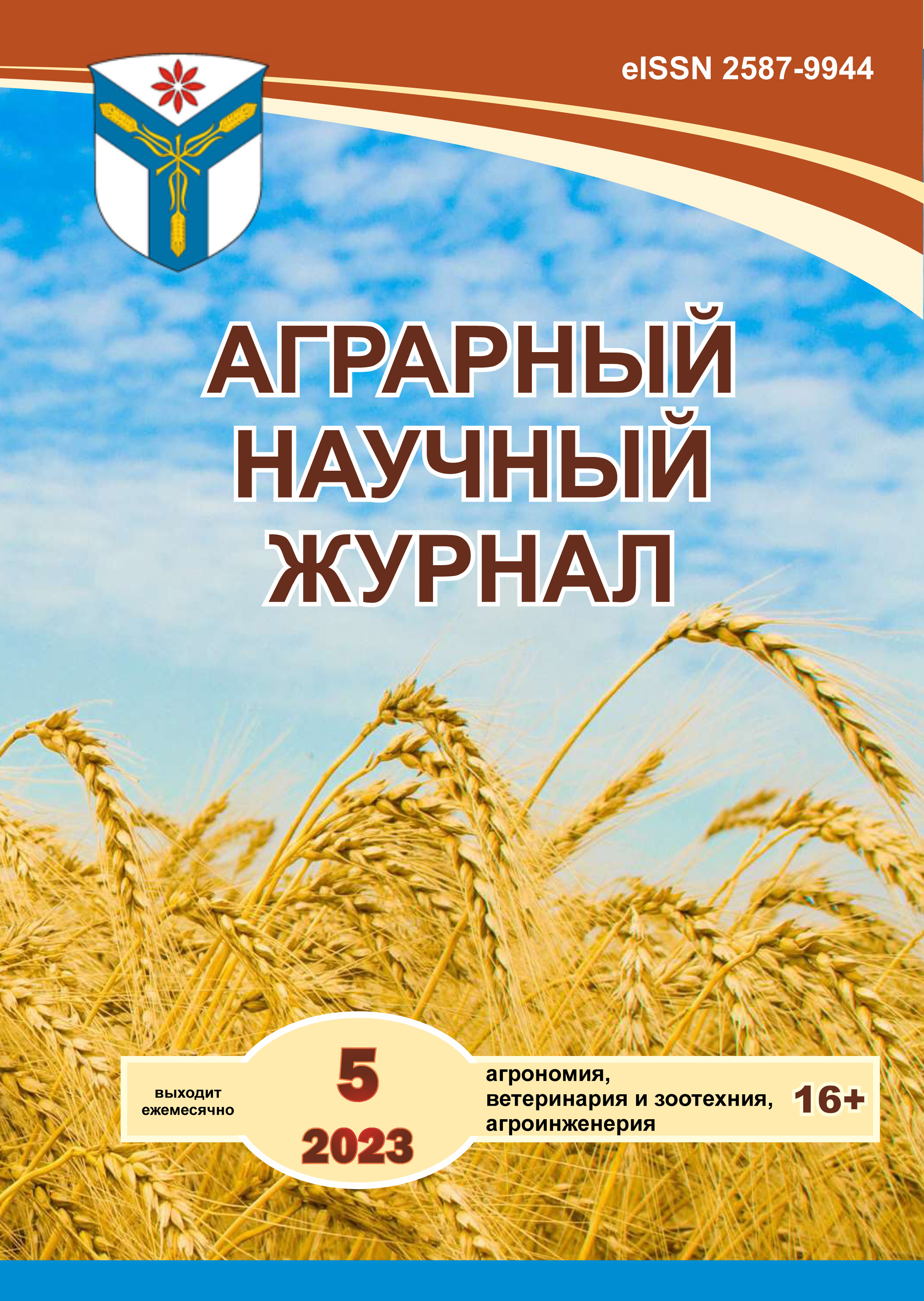Features of growth and development of sturgeons and their hybrid forms in industrial conditions
DOI:
https://doi.org/10.28983/asj.y2023i5pp62-66Keywords:
sturgeon, hybrids, growth, developmentAbstract
The article presents the results of assessing the exterior indicators of sturgeon hybrids when grown under certain conditions. Experimental studies were carried out at LLC "Mulinsky fish farm" of the Nizhny Novgorod region in 2019-2022. The object of the study was sturgeons of different genotypes (Russian sturgeon - group 1, Siberian sturgeon - group 2, hybrids of Russian sturgeon with Siberian - group 3 and hybrids of Siberian sturgeon with Russian species - group 4). In a comparative aspect, the growth rates of various genotypic groups of sturgeon fish species were determined when grown in a recirculating water supply installation. Based on the data on morphometric parameters, it was found out that the difference in the studied characteristics is not significant. As a result of comparison of external features, it was found that the fish of all groups had a physique typical of sturgeons. Based on the analysis of the conducted studies, it can be concluded that the 3rd hybrid group was the leader in terms of total and commercial length in all age periods, surpassing the groups of other genotypes. It is also important to note that the hybrid groups outperformed the purebred forms, it was proved that the effect of heterosis appeared. In terms of body weight in all age periods, their heterogeneity is noted, so at the age of 3.6 and 9 months, the largest mass among all groups is observed in group 1, where hybrids are superior to purebred forms, by 12 months the situation changes and at 18, 24 months hybrids begin to exceed parental forms, that is, a hybrid force is manifested. Changes in body length, height and girth can be attributed to the characteristics of the breed.
Downloads
References
Басонов О. А., Судакова А. В. Сравнительная характеристика гематологических показателей осетровых разных генотипов, выращенных в условиях замкнутого водоснабжения // Известия Оренбургского государственного аграрного университета. 2022. № 4(96). С. 330–334.
Басонов О. А., Судакова А. В. Бонитировочная оценка осетровых в индустриальных условиях выращивания // Достижения и перспективы реализации национальных проектов развития АПК: сб. науч. труд. по итогам VIII Междунар. науч.-практ. конф., посвящ. памяти заслуженного деятеля науки РФ и КБР, профессора Б.Х. Жерукова, Нальчик, 19–21 ноября 2020. Нальчик, 2020. С. 135–139.
Поддубная И. В., Васильев А. А., Сучков В. В. Эффективность выращивания гибридов осетровых рыб с использованием в рационе биологически активных веществ // Аграрный научный журнал. 2022. № 2. С. 50–53.
Руднев М. Ю., Васильев А. А., Руднева О. Н., Гуркина О. А. Перспективы выращивания осетра в установке малой мощности с применением технологии аквапоники // Аграрный научный журнал. 2022. № 9. С. 72–75.
Судакова Н. В., Микодина Е. В., Васильева Л. М. Сменa парадигмы искусственного воспроизводства осетровых рыб (Acipenseridae) в Волжско-Каспийском бассейне в условиях дефицита производителей естественных генераций // Сельскохозяйственная биология. 2018. Т. 53. № 4. С. 698–711.
Тарчоков Т. Т., Максимова В. И., Юлдашбаев Ю. А. Генетика и биотехнология: учеб.-практ. пособие. М.: КУРС: ИНФРА-М, 2016. 112 с.
Downloads
Published
Issue
Section
License
Copyright (c) 2023 The Agrarian Scientific Journal

This work is licensed under a Creative Commons Attribution-NonCommercial-NoDerivatives 4.0 International License.








